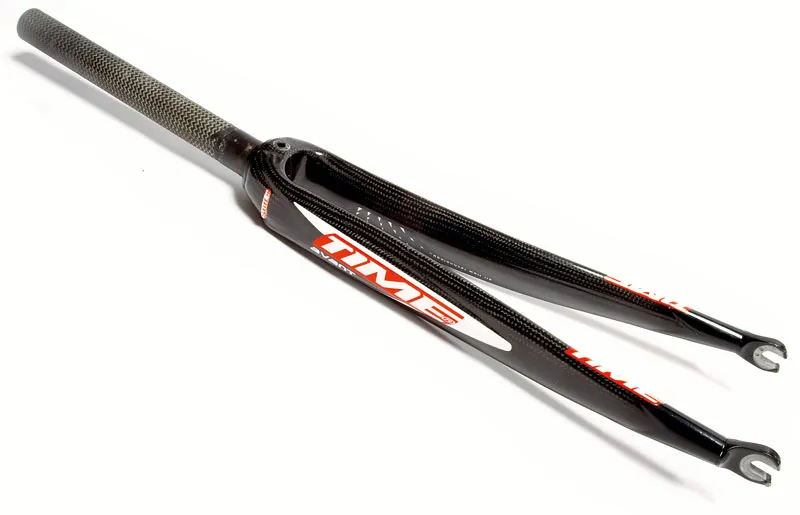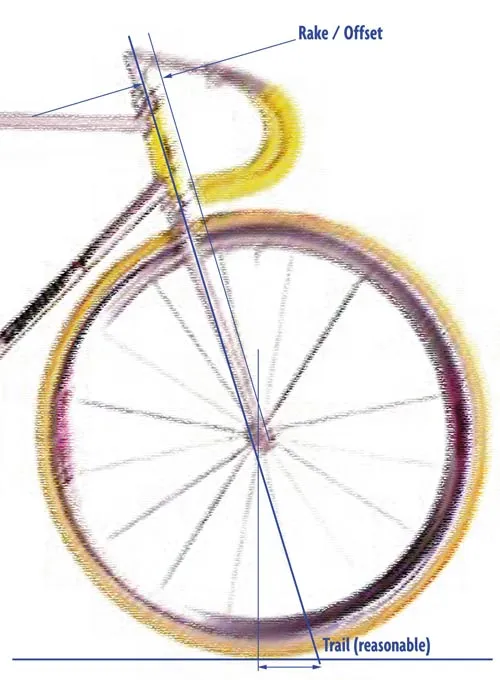The best carbon composite forks (often just called 'carbon forks' as shorthand) available today are on average one third the weight of a steel fork and around half that of a bonded aluminium fork. It's therefore no wonder that an ever-increasing proportion of the forks you see, both on production bikes and in the aftermarket, are made from carbon. Fitting a carbon fork will have less of an effect on your bike's performance than, say, fitting lighter wheels, but that weight saving will certainly have a significant influence.
Here we have looked at a wide range of forks, including audax forks that are essentially slightly longer versions of race forks with mudguard eyes. The failure of carbon fork blades can be sudden, unlike steel, where damage can be progressive, predictable, and even mendable. Any carbon fork that has been involved in a crash should be replaced even if there is no outward sign of damage - anyone buying a second-hand bike might also consider a new fork prudent. We'd like to see more manufacturers following the lead of Look, who provide an aftercare policy that measures the deflection of a fork to determine whether damage has been sustained in an accident. Damage, performance, or weight aside, you may simply want a better looking fork...
Forks Explained
Fork offset or rake, and trail offset is the distance that the fork blades bend forwards relative to the perpendicular line of the fork steerer. This figure can sometimes be found printed on the fork steerer label. Most forks have a 4.3cm offset though some are also 4.0, 4.5 or even 5cm.Trail is the combined calculation of the frame's head angle and the offset and can be found at (among others) www.kreuzotter.de. A long trail is good for stability while a short trail makes it more responsive. But on most performance-oriented bikes that we have tested with a 73 to 74 degree head angle, fitting a fork with a 0.2cm longer or shorter offset in place of the original one has no effect on the handling whatsoever.
Fork length, measured from the base of the crown race to the fork ends. There is not much noticeable difference, as little as 3mm, between road forks. Audax, commuter and touring forks can vary between 10-18mm. When replacing forks ensure the new fork is the same length as the one it is replacing
Fork Types and Sizes
100% carbon forks
These are usually constructed in a single, uninterrupted moulding and while they are around twice the cost, they are around 40% lighter and have greater resistance to accident damage than the cheaper 'carbon/alu/carbon' - see below.
Carbon/alu/carbon forks
These use carbon fork blades and steerer tube bonded to an aluminium crown.
Carbon/alu forks
The cheapest type of carbon fork described here as 'carbon/alu' has carbon fork blades bonded to an aluminium crown and steerer tube.
Integrated fork crown
Identified on the bike by a very small gap between the fork crown and the frame. Used on frames that fit an integrated or internal headset.
Non-integrated fork crown
The headset cups are clearly visible between the frame and the fork crown. Used on frames that fit regular headset cups.
Steerer size Most modern frames will take a 1 1/8in diameter steerer. Older frames will likely take a 1in steerer tube.
Wedge Bung
Wedge bung, star-fangled nut or star washer? Some forks are supplied with a bung that wedges inside the steerer tube to enable preloading of the headset bearings. These bungs are internal-expanding plugs of aluminium with a central 6mm thread and are available aftermarket in a range of sizes to suit the internal diameter of the steerer tube. They should always be used on carbon fork steerer tubes in preference to star washers (or star-fangled nuts) - star-shaped washers that, when forced into the steerer tube, could damage the carbon fibres. The star washer is, however, fine to use on forks with aluminium or steel steerer tubes.
Brake Bolts
The depth of the fork crown varies considerably between brands so it is worth checking that the Allen key fitting nut that goes into the rear of the fork crown is long enough - see that it turns onto the thread of the calliper centre bolt by at least five turns of the Allen key. Thankfully, two of the forks tested with deeper than average fork crowns were supplied with long Allen nuts, though where required a longer or shorter Allen nut can easily be sourced from a cycle shop.
Fork Blades
The fork blades connect your front wheel hub to the rest of the bike. Some are shaped to improve aerodynamics.
Material
Carbon composite forks for road-racing purposes consist of pre-impregnated carbon sheets. These are layered in such a way that the design engineer can tune the amount of deflection, making it stiffen considerably towards the end of its travel in much the same way that a steel fork does. Less costly carbon forks use an aluminium crown or aluminium crown and steerer tube.
Dropouts
Dropouts can either form part of the moulding itself, or come as alloy pieces that are bonded into the ends of the fork blades. Safety tabs satisfy many international legal requirements to prevent the wheel from falling out in the event of the skewer becoming loose.
Fork Crown
The crown connects the blades with the steerer-tube and provides a seating for the headset crown race.
Steerer Tube
The tube which allows mounting of the headset bearing inner races and mounting of the handlebar stem.
Cutting the Steerer Tube
Most forks are supplied with a steerer tube of around 300mm in length. These require trimming with a hacksaw to suit the user's preferred handlebar height. Be sure to install the headset and slide the steerer through the head-tube before deciding on precisely how much to trim from the steerer tube. We advise leaving at least 30mm of steerer tube protruding beyond the top edge of the headset top cap, so that the handlebar height can be altered in the future. Always use a dust mask while cutting carbon steerer tubes; this will protect you from inhaling any hazardous particles.



